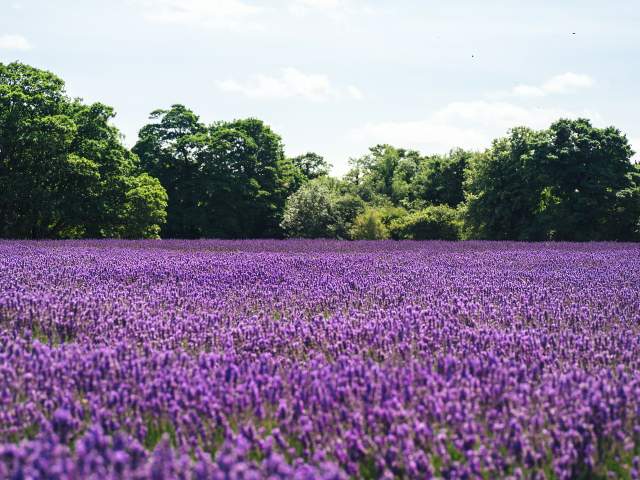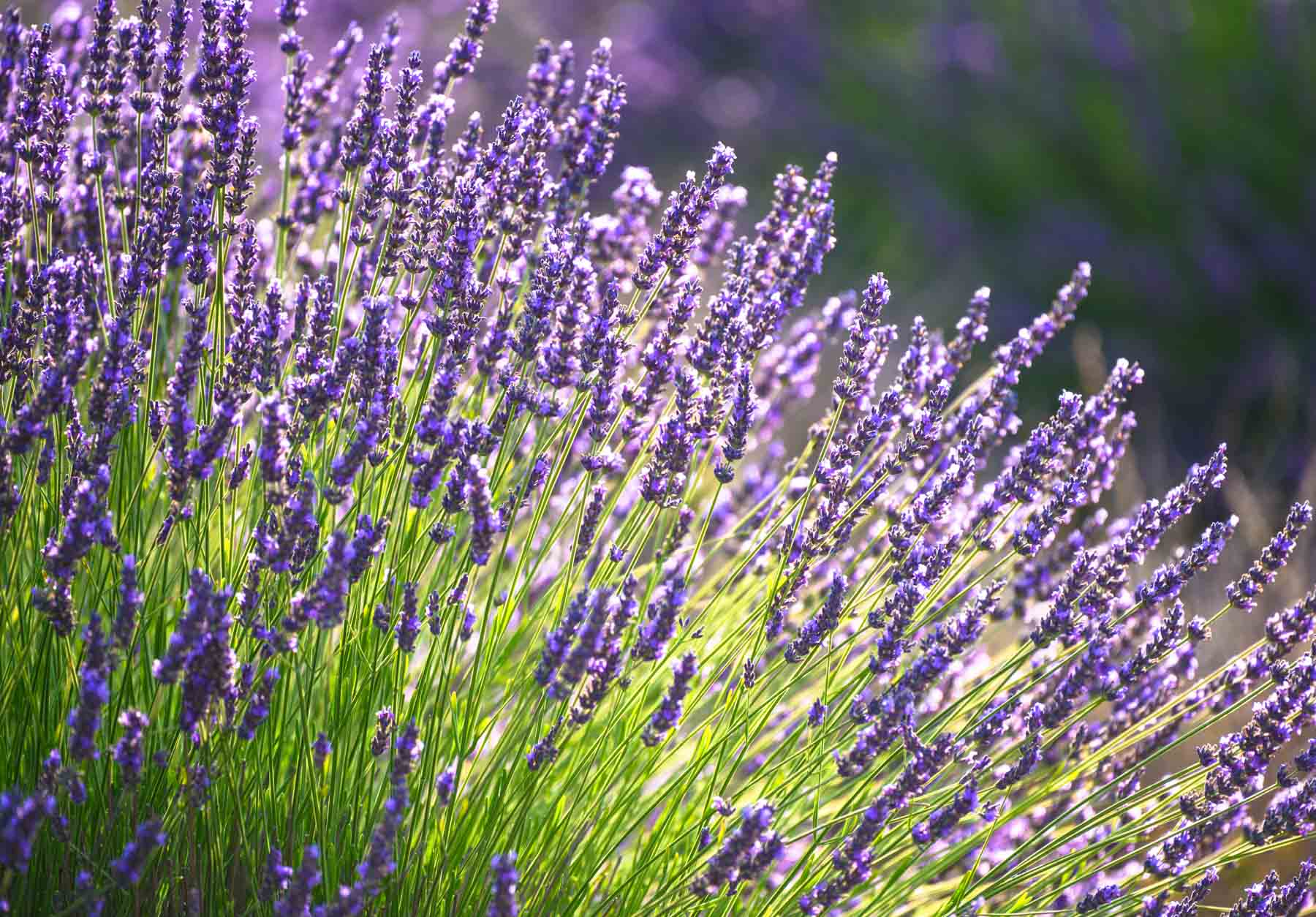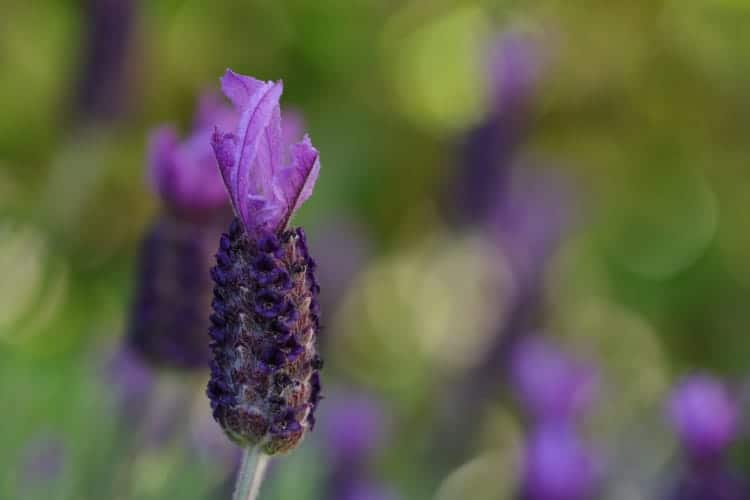Lavenders are subshrubs that are perennial and excellent for creating fragrant attractive hedges, plants, and borders around gardens. However, you might be worried that they’ll spread throughout your garden like other herbs do.
In terms of vegetative growth, lavenders can spread, with the greatest variety reaching 36–40 inches (90 – 100 cm). Although lavenders can spread through seed dispersal, the rate of germination is extremely low. By cutting off the seed-bearing flower heads in the late summer, you can stop the spread of lavender.
Other than the seeds that are disseminated from pods generated in their wasted flower heads in the late summer, lavenders cannot be multiplied by division, self-propagation, or any other technique. (Even though gardeners may quickly grow them from cuttings.)
Lavenders won’t appear out of nowhere in your garden like other herbs are known to do since the seeds need extremely particular circumstances to germinate.
Lavender comes in a variety of sizes, and how well they are maintained and pruned each year affects how much they grow.
Read on to find out how lavenders spread and how to stop seeds from spreading.
Table of Contents
How Much do Lavenders Spread?
Lavenders have often been grown in three different classifications: dwarf, semi-dwarf, and giant lavenders.
| Lavender variety | Favorite Varieties | Lavenders’ Radius of Spread |
| Miniature lavender | “Hidcote Superior,” “Munstead,” “L. stoechas,” and so forth | When completely grown, dwarf cultivars rarely reach taller than 24 inches and wider than 16 inches by 18 inches (40 cm by 45 cm). These small lavender plants thrive both outdoors as attractive boarders and indoors as house plants. |
| Miniature Lavenders | such as “Hidcote,” “Pink Perfume,” “Loddon Blue,” etc. | At full maturity, semi-dwarf or medium plants often reach heights and widths of 20–24 in (50–60 cm). |
| Huge lavender plants | Alba, Mailette, Hidcote Giant, etc. | If they are planted in ideal growing conditions, giant lavenders can reach heights and widths of 36–40 inches (90–100 cm) in the height of summer. Commercial lavender growers frequently cultivate giant types. |
All lavenders reach a height and width that is about equal. Naturally, this is based on how well the plant is taken care of and how much room it has to grow.
Each summer, the size, health, and strength of the flowers are greatly influenced by the amount of sunshine, and trimming is important to prolong the life of the lavender and keep shape.
Regular pruning will prevent lavender plants from growing leggy, produce fewer blooms, and make them more susceptible to weather-related harm.
(To find out why your lavender isn’t flowering, see my article.)
Lavender plants need at least six hours of sunlight each day, but more sunlight is better for their blossoms.
Naturally, the spacing between your lavender plants should depend on how far each lavender expands during its growth cycle.
The ideal growing distance for lavenders is between two and three feet. The proper spacing between lavender plants will allow them to enjoy a breeze (which helps prevent fungal disease) and receive enough light throughout the day without casting shadows on one another.
By separating them, there will be less rivalry among the plants for resources like water, nutrients, and room for their root systems.
It is recommended to prune your lavender plants twice, first in the early spring and once more in the late summer, to remove wasted flower stalks. This will prevent lavenders from spreading or taking on an unattractive shape, reduce the growth of weaker woody branches, and limit their ability to expand.
How to Avoid Lavenders Spreading by Seed
No other method, including self-propagation, can spread lavender plants (however they are reasonable easy to propagate with some planning). They can be physically divided, however taking cuttings to proliferate has a considerably higher success rate.
Lavenders produce seeds in seed pods that emerge in the late summer from their faded flower heads. You will hear the seeds rattling inside if the spent flower heads haven’t been cut off throughout the season.
This is a significant benefit for limiting the spread of lavender because all the seeds are contained in a single seed pod, making it much simpler to manage by simply deadheading the flowers before the seeds mature.
It is extremely improbable that the lavender will self-seed, even if you let it go to seed. While lavender seeds very rarely germinate through self-seeding, herbs like oregano are infamous for doing so. You shouldn’t be concerned about this in your garden because I have never seen lavender spread in this way in my experience as a business gardener.
Growing lavender plants from seed involves a number of phases, including a period of cold weather followed by warm soil temperatures of about 75° to 80°F (23.9° to 26.7°C). Ideally, the soil in the plants’ trays should be heated from below.
It is improbable that your garden would experience the precise sequence of events needed to grow lavender plants from seeds naturally.
In addition, lavender hybrids sometimes generate infertile seeds, making propagation by cuttings the only viable method for growing further plants.
In all climes, controlling lavender’s seed distribution is fairly simple and rarely a problem for gardeners.
Key Takeaways
- Only vegetative growth or seed dissemination may spread lavender.
- Lavender plants typically grow to be as broad as they are tall. For species like “Hidcote Giant,” the maximum vegetative spread of lavender is approximately 36–40 inches (90–100 cm).
- Compared to other herbs, lavender seeds have a very low germination rate, and self-set lavender rarely causes issues in gardens.
- Simply cut off the flower heads after they have blossomed to stop the propagation of lavender seeds.
- The amount of sunlight, the amount of space, and the level of care given to lavender plants all have an impact on their size and distribution.
- To keep lavender healthy, prevent it from spreading and getting leggy, prune it to a pleasant circular mound form in the spring and lightly just before winter.
FAQ
Do lavender plants spread quickly?
Despite the fact that certain lavender kinds spread and grow slowly, others do so swiftly. These are the kind of lavender that stretch out and grow in only a few short weeks. The simplest approach to determine if your lavender plant is the invasive variety is to periodically monitor its progress.
How is lavender propagation?
Lavender plants can be multiplied from seed, cuttings that have been rooted in soil, or stem cuttings that have been rooted in water.
How quickly does lavender spread?
It could take one to three months for lavender to reach transplanting size due to its slow growth. Fungus is the main danger to lavender seeds and seedlings. While maintaining sufficient air circulation, keep the soil mixture moist to help prevent disease outbreaks.
Does lavender come back every year?
A Low-Maintenance Perennial Is Lavender It’s a terrific investment because this beauty will return to your garden every year for roughly three to five years. This is what? However, I want to advise you to always pick plants that flourish in your plant hardiness zone before you make any plant purchases.
Does lavender plant multiply?
Growing lavender plants from cuttings is simple and more likely to succeed than starting them from seeds. You can rely on cuttings to produce plants that are identical to their parent plants.



